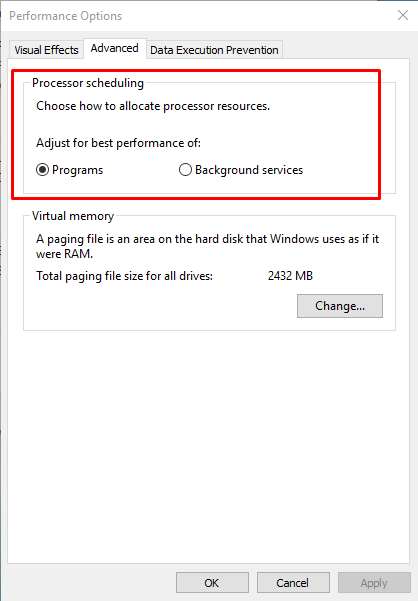Change Visual Effects Windows 10
Posted By admin On 23/09/19
Jan 28, 2018 One reason can be the unnecessary visual effects, you can make your PC’s performance better and faster by changing visual effects settings in Windows 10. Though Microsoft has added these visual effects to make your PC look prettier, in some PCs, it. One reason can be the unnecessary visual effects, you can make your PC’s performance better and faster by changing visual effects settings in Windows 10. Though Microsoft has added these visual effects to make your PC look prettier, in some PCs, it can affect the performance and make the OS slower. I'm trying to change the Visual Effects via the registry because it is a user setting. However, when I do it, it changes the GUI, but it has no effects on the system. I have read that there is more happening behind the scenes than just a registry hack to change these setting.
- I am trying to figure out how to change Visual Effects in an automated fashion (i.e. Batch files, REG files) so it does not need to be manually changed. I'm stuck on Visual Effects right now. I am trying to create a REG file that will put the system in this state: Actually I might also check 'Show window contents while dragging' but that's.
- Aug 13, 2017 Moreover, We always recommend choosing the best option to Change Visual effects in Windows 10 for Better Performance. Windows Registry can’t disable all the Visual Effects because Windows Registry works with system Compatibilities.
- Across Windows 10, you'll find a bunch of animations that give you the illusion of movement and make the experience feel a little smoother. One of these animations is the sliding effect when.
- Optimize Windows 10 for better performance (Changing Visual Effects) Go to Start Menu Settings. Click on Ease of Access. On the left side, Select 'Other options'. Click on the Toggle Button to turn on or off. Close the Settings after applying.
If your Windows 10 is running slowly, you can do many things to speed up the operating system. One of the ways is to free up some system resources. You can reduce the system resource usage by closing applications that are not important to you right now, background services, and visual effects.
Like its predecessors, Windows 10 also offers many visual effects, and Windows enables most of them by default. Window animations, shadows under mouse pointer, aero peek, drop shadows for icon labels on desktop, animations in taskbar, and shadows under windows are visual effects. Download cinema 4d free full version windows 7.
Visual effects take a considerable amount of system resources and can slow down your Windows 10 PC, especially if your PC has a smaller amount of RAM (4GB or less).
So, if your Windows 10 is running slow, you can disable visual effects to improve the performance. Depending on the amount of RAM on your PC, disabling visual effects might make negligible to significant impact on Windows 10’s performance.
Visual Effects Studio
Disabling all Windows 10 visual effects or disabling specific visual effects is easy. You don’t need to edit Registry or system files to disable visual effects.
Disable visual effects in Windows 10 to improve performance
Here is how to disable Windows 10 visual effects to adjust Windows 10 for best performance.
Tip: Did you know that by switching to SSD, you can increase PC’s performance by up to 50%?
Step 1: In the Start/taskbar search field, type Sysdm.cpl and then press Enter key to open System Properties dialog.
Step 2: Switch to the Advanced tab. In the Performance section, click Settings button. You should now see Performance options dialog.
Step 3: Here, choose Adjust for best performance if you want to turn off all visual effects and gain the best possible system performance. Finally, click Apply button.
But if you want to keep certain visual effects, select Custom option, deselect visual effects that you don’t want to see and then click Apply.

Aero Visual Effects In Windows 10
WARNING: When visual effects are turned off, fonts on your PC might look odd. If you want to restore the original look of fonts, select Smooth edges of screen fonts, and click Apply.